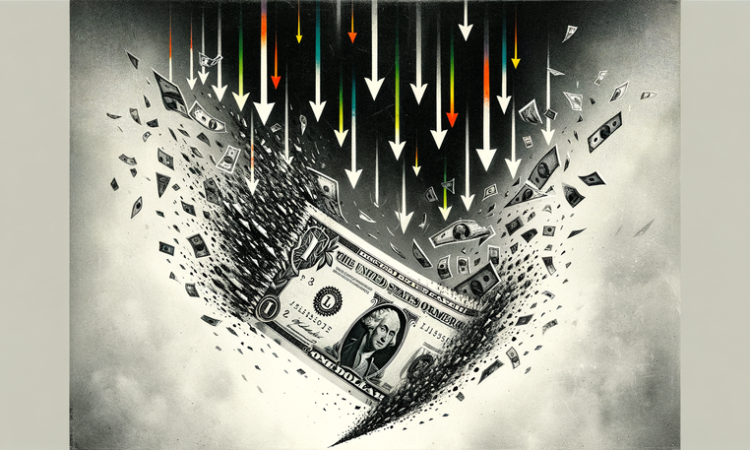
What’s going on here?
The US dollar has hit its lowest levels since March against the euro and sterling, and a 2.5-month low against the Swiss franc, driven by weaker US manufacturing activity and declining construction spending.
What does this mean?
Recent US economic softness has fueled speculation of earlier Federal Reserve rate cuts. Fed funds futures now suggest a 59.1% chance of a rate cut in September, up from 55% the previous Friday. All eyes are on the upcoming monthly US payroll data, set to release on Friday, which will be crucial for gauging economic health and adjusting monetary policy expectations. While no policy changes are anticipated at the Federal Reserve’s next meeting on June 12, updated economic and interest-rate projections will be key. Meanwhile, the dollar index remains relatively stable at 104.08 but has dipped below 104 for the first time since April 9.
Why should I care?
For markets: Navigating the waters of uncertainty.
The weakening US dollar against major currencies signals growing investor anticipation of rate cuts, significantly influencing market dynamics. With the euro rising to $1.0916, its highest since March 21, and the Swiss franc gaining strength, traders are closely monitoring central bank moves. The dollar’s performance against the yen also warrants attention, as upcoming key policy meetings from the Bank of England and Bank of Japan could shift expectations further.
The bigger picture: Global economic shifts on the horizon.
The potential dovish shift by the Federal Reserve comes amid broader global inflationary and economic trends. The European Central Bank faces a delicate balancing act with rising , while the Swiss National Bank’s rate cut prospects hang in the balance with fluctuating local price indices. The significance of US economic data extends beyond domestic borders, shaping monetary policies and forex market stability internationally. The scenario in November, featuring both a pivotal Federal Reserve meeting and US elections, underscores the critical nature of upcoming economic indicators for global financial strategies.



